Displaying items by tag: COVID19
Downtown Struggles to Survive
SARATOGA SPRINGS — “Doors are closing. People are closing. It’s already too late for many businesses,” said Heidi West, Lifestyles of Saratoga owner.
West is just one voice of many small business owners all coming to the same consensus, it may already be too late for the once bustling downtown Saratoga. While some stores embraced reinventing to keep business going for them amid COVID-19 restrictions, others were not so lucky.
“A lot of doors are closing. We don’t have much time left to be honest. We do need to figure out how to be safe and be open all at the same time,” West said. “All of this makes it an uphill battle but…give us a fighting chance. Open our doors so we can get through it.”
The community of Saratoga Springs has felt the impact of economic restrictions before. In 1945, the community was filled with rundown structures following both the Great Depression and World War II. It was not until 10 years later, in 1958 the Planning Board moved forward with the city’s master plan for renewal.
For years to come, the city saw plenty of urban renewal. However, individuals and small businesses owners lost low-cost rents and had “no choice” in what was happening, seeing the destruction of neighborhoods and facing costly relocation expenses.
Small businesses worry that the town can revert back to those moments in history and time is not on their side as restriction stay in place. However, just as locals saw the creation of the new normal then, businesses are facing the new normal of today.
“It’s not like we are going to open our doors the way they were six months ago, not by any stretch. Our new normal will be gloves, masks, and disinfecting, but with our doors open. But we have to at least be able to open our doors,” said Pam Worth, owner of Spoken Boutique.
As restriction continue to wear on businesses, coming back from what was lost may not be possible. Safety is at the forefronts of any plans business owners create with the hopes
of reopening.
“It is my opinion…I can be safer than a big box store. I have a 12 step program already typed up about how I’m changing protocol,” West said. “Even being allowed to have an one-on-one appointment with that protocol in place would be helpful. We just need to keep moving forward.”
Todd L. Shimkus, president of Saratoga County Chamber of Commerce, has drafted a “Plan for Saratoga County’s Economic Recovery” through a collaboration with the Downtown Business Association, the City Center, Discover Saratoga, SEDC, and the Saratoga County Prosperity Partnership.
“We’ve been sharing [the plan] with Federal, State, County and local officials. The development of this plan is in part a way for Saratoga County to demonstrate that we have a plan to safely reopen. The Governor has said this is a pre-requisite for businesses and we’re hoping that by doing this collectively with common operating procedures that we will position Saratoga County in a positive light,” Shimkus said.
Shimkus shared two key aspects of the multi-part plan. Recovery kits for small business have been created to include a startup supply of PPE for all business. They also have met with local restaurants and will be doing the same with hotels and retailers to develop common cleaning protocols that those businesses will pledge to follow once reopened.
“Our focus is on making it crystal clear that health comes first in Saratoga County and that our local business community is united in working together to keep everyone safe so that we can reopen sooner,” Shimkus said.
Pam Worth feels that downtown has a strong impulse of businesses wanting to prove they can open safely.
“Saratoga is a much different town than most, being one of the top five downtowns in all of the United States. I feel who better to set the precedence in what should happen in a beautiful resort town but Saratoga Springs,” Worth said. “We all want to open our doors safely and set the right precedent to what is the new normal. But in order for all of that to happen, we have got to get the doors open.”
Maddy Zanetti, Impressions of Saratoga owner with Marianne Barker, said they plan to take extra precautions, clean things more, and stay distant from customers as soon as their doors are open. Zanetti feels that foot traffic will take a while to pick up, as people adjust to going out and feeling comfortable around others.
“We are definitely worried about how this year is going to pan out for us, but we are making the most of it and doing the best we can,” Zanetti said.
West believes it’s not too late to bounce back, but the key is getting safety plans in place as soon as possible. If she can’t open by June 1, she will have to focus on different plans in terms of closing doors.
“My success is the success of my 20 employees, who are suffering, and the success of the whole community. I really just want a voice for the small business. It’s becoming crucial at this point in my opinion,” West said.
Worth believes with the downtown leaders being business owners, everyone can bring an opinion and structure as to how they can get the town up and running again.
“Saratoga is an amazing downtown community that wants nothing more than to survive and to stay successful,” Worth said. “The strong local community that we have, and the local people that support our downtown, are the ones that are going to keep us alive.”
Can Saratoga Reopen May 15? Here's What Has to Happen
ALBANY — Gov. Andrew Cuomo on Monday announced that portions of the state may be able to reopen on May 15 when the New York on PAUSE order expires.
The potential reopenings will occur in phases by "regions," and only if regions meet a series of benchmarks.
The measures that need to be in place refer to the monitoring capabilities of new infections, securing there is adequate capacity in the health care system to deal with potential new illnesses and hospitalizations, increased diagnostic testing, and having contact tracing in place to lessen the spread of the disease.
Saratoga County is incoporated into the Capital Region - an eight-county area also consisting of Warren, Washington, Albany, Schenectady, Rensselaer, Columbia, and Greene counties.
The criteria to reopen is comprised of seven headings. The Capital Region currently meets five of those. Those five include: a 14-day decrease in hospital deaths or fewer than five deaths over a three-day average; less than 2 per 100,000 new hospitalizations over a three-day rolling average; having ample hospital beds available – 41 % of total beds and 44 % of ICU beds where a minimum of 30% is required for each, and exceeding the metric requirements for the number of contact tracers needed.
The regional shortcomings, as depicted in a slide presentation by the governor on Monday, are in two categories. Those are: showing a 14-day decline in hospitalizations or under 15 new hospitalizations, and having a minimum of 30 per 1,000 residents tested monthly. Both the categories are taken as a three-day average.
Using Saratoga County specifically as a reference point, the number of hospitalizations has remained below the 15 person threshold since mid-April, although the county falls short in the testing criteria - which would require approximately 700 Saratoga County residents be tested every three days. Recently the average number of residents being tested has been just under 500.
Still, it is important to note that Saratoga comprises just one of the eight counties in the Capital "Region" directive. Numbers from all counties must be collected an analyed, and the governor said Monday that regions believing they can start to reopen May 15 must first conduct their own analysis and ensure they meet the approriate criteria. "These are the facts they have to have in place to do it," Cuomo said. "Start now with the analysis; don’t wait until May 15."
The reopening would happen in stages.
Phase 1: Construction, Manufacturing and wholesale supply chain, Select Retail - curbside pickup.
Phase 2: Professional services, Finance and Insurance, Retail, Administrative Support, Real Estate/ Rental Leasing.
Phase 3: Restaurants/ Food Services, Hotels/Accomodations.
Phase 4: Arts/ Entertainment/ Recreation, Education.
The regional approach would require input from, and the coordination of a variety of people - elected officials and hospital officials, among them. Details regarding the formation of a regional group, or the composition of its members is not immediately known.
Testing Sites for COVID-19
Northern Saratoga County
• GLENS FALLS HOSPITAL
100 Park Street, Glens Falls, NY 12801
Criteria for Testing: Symptomatic or Exposure to Positive Case
Schedule an Appointment: Working with Warren County Public Health.
See Warren County Municipal Center.
• HUDSON HEADWATERS HEALTH NETWORK
9 Carey Road, Queensbury, NY 12804
Criteria for Testing: Symptomatic or Exposure to Positive Case
Schedule an Appointment: Call your Hudson Headwaters provider for evaluation.
Visit www.hhhn.org/ for more information.
• WARREN COUNTY MUNICIPAL CENTER
Criteria for Testing: Symptomatic or Exposure to Positive Case
Appointment and referral are required. Providers and local county health departments
must complete and sign Infectious Disease Requisition (IDR) form and contact Warren
County Public Health to make appointment. Appointment calls are taken Monday-
Friday from 8 a.m.- 4 p.m., and Saturday-Sunday from 10 a.m.-12 p.m. Drive-thru site is
open Monday- Friday, 9 a.m. – 1 p.m. Those without signed IDR form will be turned away.
• SARATOGA HOSPITAL
211 Church Street, Saratoga Springs, NY 12866
Criteria for Testing: Symptomatic or Exposure to Positive Case
Appointment and referral from physician or local health department is required.
Contact your doctor for assessment. Providers may call 518-587-2397 to set up
appointment. Tent hours 11 a.m. – 2 p.m.
Central Saratoga County
• SARATOGA HOSPITAL 
211 Church Street, Saratoga Springs, NY 12866
Criteria for Testing: Symptomatic or Exposure to Positive Case
Appointment and referral from physician or local health department is required.
Contact your doctor for assessment. Providers may call 518-587-2397 to set up
appointment. Tent hours 11 a.m. – 2 p.m.
• ST. MARY’S HEALTHCARE
427 Guy Park Avenue, Amsterdam, NY 12010
Criteria for Testing: Symptomatic
Call 518-770-7521 for evaluation, Monday-Friday, 9 a.m. – 4:30 p.m.
• CAPITAL DISTRICT MOBILE TESTING CENTER
University at Albany, Colonial Quad, 1400 Washington Avenue, Albany, NY 12206
Criteria for Testing: Symptomatic or Exposure to Positive Case
Appointment is required. Go to: covid19screening.health.ny.gov to take the online
assessment, or call 1-888-364-3065. Drive-thru site.
Southern Saratoga County
• ELLIS HOSPITAL
1101 Nott Street, Schenectady, NY 12308
Criteria for Testing: Symptomatic or Exposure to Positive Case
Appointment is required. Call the Ellis Medicine COVID-19 Hotline at 518-831-7070.
Drive-thru or walk-up site. Site location varies by day.
• CAPITAL DISTRICT MOBILE TESTING CENTER
University at Albany, Colonial Quad, 1400 Washington Avenue, Albany, NY 12206
Criteria for Testing: Symptomatic or Exposure to Positive Case
Appointment is required. Go to: covid19screening.health.ny.gov to take the online
assessment, or call 1-888-364-3065. Drive-thru site.
• COMMUNITY CARE PHYSICIANS
711 Troy Schenectady Road, Latham, NY 12110
Criteria for Testing: Community Care Physicians patient or Community Care
Physicians Urgent Care patient with Symptoms or Exposure to Positive Case.
Appointment is required. Call your Community Care Physicians provider to schedule a
telehealth appointment to be evaluated. Drive-thru site.
• ST. PETER’S HOSPITAL
310 Manning Boulevard, Albany, NY 12208
Criteria for Testing: Symptomatic or Exposure to Positive Case
Call 518-525-1132 for evaluation. Appointments are scheduled at the Capital District
Mobile Testing Site.
OTHER
• ALBANY STRATTON VA MEDICAL CENTER
113 Holland Avenue, Albany, NY 12208
Criteria for Testing: Enrolled Veteran with Symptoms.
Appointment is required. Call primary care physician for evaluation and referral.
Drive-thru site.
• WHITNEY YOUNG HEALTH CENTER
920 Lark Drive, Albany, NY 12207
Criteria for Testing: Symptomatic or Exposure to Positive Case
Appointment is required. Call Whitney Young Health Center at 518-465-4771. Walk-up site. Whitney Young Health Center is also testing at these Walk-up site locations:
Bleeker Terrace Apartments, Bleeker Terrace, Albany, NY 12206 - Hours vary by day
Capital South Campus Center, 20 Warren Street, Albany, NY 12202 - Hours vary by day
Watervliet Health Center, 1804 Second Ave, Watervliet, NY 12189 - Hours vary by day
Small Business Reinvent During COVID-19
SARATOGA SPRINGS — Just as local eateries convert to online orders and to-go options, other small businesses reinvent themselves to adapt to the ever-changing times.
Something Bleu Bridal reinvented the bridal dress shopping experience, introducing two types of appointments for brides to be. Owners Kathyrn Metzler and Marissa Mackay developed concierge bridal appointments and Zoom party bridal appointments for brides to find their wedding gown, while still following social distancing guidelines.
“These new appointments are unconventional but can still be enjoyed. You should still feel like you’re getting some of the bridal experience that you pictured in your mind,” Mackay said. “We wanted to discover a way to be in business when we are not allowed to be in business as we were.”
The concierge appointments includes a personal Zoom consultation where the bride can choose up to five gowns. Those five gowns are then transported to the bride to try on in the privacy and safety of their own home. Deliveries of the dress will be made within one-hour of their store location and dresses can be held for 24-hours.
“The idea of having a concierge appointment seemed like the most natural way that we can service our brides in a really custom fashion with all of the conditions the world is in,” Mackay said.
Zoom Party Appointments have become a permanent fixture for the boutique. Currently, Mackay and Metzler use the appointment to provide the bride a customized service at a distance. They use the appointments to gain a feeling towards the aesthetic the bride would like on their wedding day. However, they plan to use Zoom to include family and friends who live farther away in the bridal experience once social distance restrictions are lifted.
“Personal connection is really important to us, so we make sure that the consultation portion of the appointment is as close as possible to the experience of shopping in our store, including a tour of our collection, time spent getting to know the bride and her style, and the opportunity to choose from among our large collection of dresses and accessories for an at-home try on,” said Mackay in a release.
So far three brides have participated in the concierge and Zoom bridal appointment. Mackay said they all went well, as the brides were shopping for their upcoming wedding and all found a dress they love.
Something Bleu Bridal isn’t the only local business that has reinvented to serve the community. Local eateries, bakeries and deli’s have became contact free establishments. Finding shopping staples such as eggs, milk and flour can be purchased at food eateries in the community. The Bread Basket Bakery is offering call-in orders for flour, sugar and yeast. They also offer bread delivery through Battenkill Valley Creamery. Another eatery, the Spring Street Deli & Pizzeria, created a grocery menu with popular grocery items that people can order and pick-up. Both stores allowing delivery or pick-up cuts down of social contact, creating a safer environment than a larger supermarket.
For projects to do at home, Saratoga Paint and Sip are offering take home projects, called Take ‘N Paint Kits. Starting at $25, the curbside pickup kit contains everything needed to create the paintings. They also offer a private Zoom room, where an artist will instruct the group through the project.
For dog owners, North Country Paws for Obedience is offering a train at home online session starting in May. Based in South Glens Falls, the online courses are described as interactive, informative and engaging. Interested parties can sign up online.
A Personal Story: Surviving COVID-19
SARATOGA SPRINGS — As the community fights together against this viral disease, some individuals are lucky to not personally know anyone fighting the battle with COVID-19. Public knowledge of symptoms and social distancing are well known, but what happens to someone after they have tested positive?
Saratoga natives Barb and Steve Ferraro are on day 44 in their battle with COVID-19, and still counting. For this couple, symptoms of fever, cough and body ache showed up on March 16. Two days later they tested positive for COVID-19.
“During the beginning of this when it hit this county, when we were tested there were under 20 people who tested positive, now it’s over 300,” Barb said.
Saratoga County reported its first case on March 7, 2020 and reported to have 331 confirmed cases as of Tuesday this week.
“Going through this has been very emotional and very scary. Luckily we are on the end side of this, but neither of us had underlying conditions. We don’t know how we got it, but it knocked us down,” Bard said.
The Ferraro’s immediately self-isolated themselves in their condo, but while they were isolated from the community, they also had to isolated from each other.
“Steve and I have to be separated even though we are both positive. We trusted the professionals and they believe we could keep re-infecting each other,” Barb said.
They divided the home into two parts, Barb taking the master bedroom and kitchen while Steve took the guest room, guest bath and den. Steve was still working from home, so Barb took it upon herself to be in charge of meals and medication.
Ten days into fighting the virus, on March 25, Barb reported having a schedule through the day, knowing more of what to expect from the virus. They each became their own doctors, checking temperatures, oxygen levels and blood pressure to report to their health officials.
“It’s an insidious beast of a virus,” Barb said. “You go one step forward and two back the next day…we are keeping an eye on our breathing which causes us the most concern. We are watching it very carefully and using our inhalers, monitoring our oxygen levels and drinking lots of fluids.”
Barb and Steve both “synced” up in terms of symptoms, learning about COVID as the rest of the community did. Barb recalled making pasta, one of her favorite meals, and having it taste like metal. That, along with the COVID-19 fog, are the symptoms the Ferraro’s experienced just as the rest of the world discovered it.
“It’s important for people to know that everything keeps changing, which is why we still need to be safe and stay at home. Information keeps changing, COVID symptoms keep getting added to the list and the assurance of immunity remains unknown,” Barb said.
After a scare with Steve’s worsening symptoms, he was transported to the hospital for bilateral pneumonia and is still recovering. On day 19 into the virus, Barb said she was happy to report their first symptom free day. Although they both tested negative for the virus, they are both recovering and continue to experience shortness of breath and fatigue on day 44.
Despite continuous fighting with the unknown, Barb said the amount of community support they received was astounding. Neighbors would reach out to the couple and ask if they needed any groceries, and family members kept close through social media. She thanked Saratoga Hospital and Public Health workers for their daily efforts to ensure the couple was safe.
Talk about re-opening the community has Barb worried, noticing that people are not taking to wearing a facemask when recommended. She went for a walk Tuesday this week and reported seeing very few masks on the families enjoying the Spring weather.
“People wearing masks are just a simple thing that they can do. I think the lines are getting blurred. Think about whom you are staying home for. You are not just protecting yourself in this situation,” Barb said.
According to their website, the CDC recommends wearing cloth face coverings in public settings where other social distancing measures are difficult to maintain (e.g., grocery stores and pharmacies) especially in areas of significant community-based transmission.
COVID-19 Regional Roundup This Week
• Statewide, the number of total hospitalizations, intubations, new infection cases and deaths due to COVID-19 continue to stabilize or decline, although the number of new hospitalizations are flat about 1,000 per day, and the daily death count is still in the hundreds. Approximately 30,000 are tested for the virus daily across the state.
• In Saratoga County specifically, approximately 2% of the county’s 240,000 residents have been tested. Those tests have been conducted largely with people who are health care workers, or patients who have displayed signs of illness or have come into contact with someone who has tested positive for COVID-19. About 7.4% of those who have taken the test - roughly 350 people – have tested positive for the virus, as of mid-week.
• Reopening. A plan to reopen segments of the state is underway, and the plan is to re-open in phases, and in particular regions, not statewide. This will occur after May 15, which is the date until the state remain on “pause.” “I will extend them in many parts of the state, but in some parts of the state, some regions, you could make the case that we can UN-Pause. But we have to be smart about it,” Cuomo said.
Criteria for potential reopening includes using CDC guidelines - that is, regional hospitalization rates must be in decline for 14 days.
• In advance of reopening: Ensure an appropriate testing regimen, and put a tracing system in place. Tracing: identifies all who came into contact with infected person. Recommended: need at least 30 contact tracers per 100,000 people. Regions must also have plans for rooms available as “isolation facilities,” for infected residents who need to isolate, but cannot do so in their homes. Each region must appoint an oversight institution to monitor metrics.
• Rate of infection: In New York City, right now 1 person infects 0.8 people; that rate is a little higher upstate which is at 0.9 percent, i.e.- 1 person infects 0.9 percent (less than one person). “If we keep the infection rate at less than one person that is where the infection rate continues to drop. So, we have to stay there.”
Points to watch after reopening: If hospitals hit 70% capacity OR rate of transmission of virus hits 1.1 – those are danger signs. “You must have 30% of your hospital beds available, 30% of your ICU beds,” Cuomo said.
• Likely to reopen first is/are potentially regions in upstate New York.
• One caveat to reopening: NO attractions / openings that would draw a large number of visitors. “You can’t do anything in one region that would increase the visitors to that (reopened) region. It’s possible that you open something in Syracuse or you open something in the North Country where you now see license plates coming in from Connecticut and New Jersey, people from downstate, all coming to that area because they’ve been on lock-down and are now looking for an activity,” Cuomo said. “So that’s something we have to pay attention to. And all that is (conducted) in a multi-state context with our neighboring states and most relevant with downstate.” Identified downstate as: New York City, Long Island, Westchester.
• Gov. Cuomo also specifically discussed the summer meet at Saratoga Race Course. “You can’t open an attraction that could bring people from across the state to that attraction and overwhelm a region,” Cuomo said. “Saratoga Race Track – I don’t think you can open unless we can open (all large-scale attractions) statewide.”
Cuomo went on to say that a pent-up public demand to get out of the house would result in people from across the northeast region flocking to Saratoga. “Now, you could say, well, that’s great for the Saratoga Race Track – but density is not our friend...How do you do six feet apart at the racetrack?” He added that any such opening would require a statewide opening of various public attractions so as to reduce the density of people overwhelmingly flocking to just one region.
• On casinos: “You have to look at the industry and how they’re going to conduct their business. You’d have to do social distancing, you’d have to have monitoring. It’s going to be difficult in the context of a casino, but depending on the casino: not impossible. You’d have to look at it on an individual basis.”
• On schools: “We will have a decision by the end of this week what to do about schools.”
• The first phase of reopening will be in the Construction/ Manufacturing sector with low-risk. There will then be a monitoring of effects two weeks after reopening regarding the status of new infections, as that is typically the amount of time it takes for the illness to manifest.
How to monitor after reopening, three ways: diagnostic tests (positive or negative if you are infected); antibody tests (how many people had previously been infected); number of hospitalizations. If the monitoring process reveals no new problems, then a second phase, involving more essential lower-risk businesses may be opened in that region. The governor said he is open to dialogue regarding what kind of businesses those should be.
• Antibody testing continues. Antibody testing indicates who has had the virus. Percent positive average statewide: 14.9%. Capital Region specifically (which includes Saratoga): 2.1%. According to the survey, 25% of the NY City population has had the virus and have now recovered.
• According to a mapped depiction of the state broken into regions, the “Capital District” includes an eight-county region: Warren, Washington, Saratoga, Rensselaer, Columbia, Greene, Albany, and Schenectady counties.
• Diagnostic testing statewide is about 30,000 per day.
• Antibody testing this week will be conducted on 3,000 health care workers and 1,000 transit workers, 1,000 NYPD and 1,000 NYFD.
• Gov. Cuomo this week requested the Board of Elections mail every New York voter a return postage paid application whereby residents may secure a voting ballot. “If you want to vote, we should send you a ballot so you can vote and don’t have to wait on line,” Cuomo said. Physical polls will still be open on Election Day.
• Todd Shimkus, president of the Saratoga County Chamber of Commerce, said a regional task force of 40 people from Saratoga County has been put together and meeting virtually to address protocols for an eventual safe reopening of businesses.
• Congressman Paul Tonko (D, NY-20) and Congresswoman Elise Stefanik (R, NY-21) both voted in the House of Representatives in support of advancing a $484 billion interim emergency funding package that will provide vital assistance to small businesses and protect Americans with added aid to hospitals, healthcare workers and testing. The bill was passed by a vote of 388 – 5. The Paycheck Protection Program and Health Care Enhancement Act: Provides an additional $310 billion in PPP loans; Provides an additional $10 billion for Emergency Economic Injury Disaster (EIDL) grants; Appropriates an additional $50 billion for the Disaster Loans Program Account; Allows agricultural enterprises with less than 500 employees to receive EIDL grants and loans; Provides an additional $75 billion for reimbursement to hospitals and healthcare providers to support the need for COVID-19 related expenses and lost revenue, and provides $25 billion for necessary expenses to research, develop, validate, manufacture, purchase, administer, and expand capacity for COVID-19 tests.
Saratoga Hospital Providing A Safe Environment for Elective Procedures, All Who Seek Medical Care
SARATOGA SPRINGS — An increasingly dangerous sign of the coronavirus lockdown has come to light in recent weeks in communities across the country where there is a marked increase of people delaying seeking care when they are sick or hurt.
The issue has grown from a reluctance of people willing to go to hospitals or urgent care facilities for fear of contracting the COVID-19 virus.
Last week, the Washington Post reported on the international phenomenon of the pandemic producing a silent sub-epidemic of people who need care at hospitals but are frightened to go to the ER. Titled “Patients with heart attacks, strokes and even appendicitis vanish from hospitals,” the article described how people with everything from inflamed appendixes to those suffering chest pains and stroke symptoms were avoiding seeking medical treatment out of fear of physically seeking care, resulting in illness and mortality concerns among the medical community. This has also played out on the local stage.
“If you’re having a medical problem that concerns you and goes beyond what a physician in their office can manage then you should really come to the emergency department, or Urgent Care and let us take care of you. People should not wait until things can go very bad for them,” says Dr. Timothy Brooks, chair of the Department of Emergency Medicine at Saratoga Hospital.
“Since this started, we’ve watched our volume drop off 40 to 50 %. The number of people who would normally come in by ambulance or by foot have disappeared. Our perception is that people are terrified about coming in because they have the belief they could catch COVID-19.
“This drop in volume really concerns us, because the disease progression that people have for all the other medical problems continues on, and what we’re seeing is people waiting far too long to come in. Instead of having a problem that might require a brief hospitalization, they are critically ill and end up on a ventilator in the ICU. And that’s happened multiple times,” says Dr. Brooks, who was born in Detroit, studied at medical school at the University of Michigan and relocated to Saratoga Springs in the late 1980s
Saratoga Hospital assures that precautions are in place to take care of all patients, and everyone admitted to the hospital is tested for COVID-19. “At the hospital and at Urgent Care – we have mechanisms in place to keep people separated and to take care of them safely. There’s not a single person in the building where we don’t know their status relative to being covid-positive or covid-negative. That way we can separate people out with COVID-19 infections,” Dr. Brooks says. “They are isolated on a separate floor and are taken care of by specific nurses, and other parts of the hospitals do not have those types of patients. Once a patient leaves our department, their room is completely sanitized with the appropriate cleaners and virus-cides.”
Inside the hospital, the work goes on. “The day has changed in the sense that when you approach patients who may be infectious it takes a little more time and preparation before you go into each room, as well as when you leave that room,” Dr. Brooks says. “I have to say I am so proud of the staff in this emergency department. Everybody stepped up to the line.”
Regardless of when an un-pausing or reopening occurs, Brooks says until a vaccine is introduced, he anticipates the virus will circulate among the population, and that the hospital is prepared to deal with ongoing public issues.
As for hospital occupancy, there is ample space for people to address issues both in the emergency room and the rest of the hospital. This week, Gov. Cuomo announced he will sign an Executive Order allowing some hospitals – Saratoga Hospital among them – to resume conducting elective surgeries, a practice which he had ordered halted in March as the virus was spreading across the state.
Saratoga Hospital currently describes three working criteria for beginning what is broadly termed “elective” surgery. The procedures are defined as: medically necessary, time-sensitive surgeries for patients with significant symptoms or serious illness, and a predicted negative health impact without the surgery.
“Cases that needed to be done and should be done, we’re in the process of bringing those back and getting them going. We’re still holding off on some areas that I would call discretionary – cosmetic plastic surgery is a good example,” says Saratoga Hospital President and CEO Angelo Calbone. “People who are in pain, conditions that may worsen if we don’t get to them. This is work that needs to be done.”
Approximately 3,000 people work under the Saratoga Hospital banner. At the hospital, there are approximately 170 licensed beds.
“This has been a learn-as-you-go situation. We know how to run a hospital. We know how to respond to emergencies. This has been a new struggle challenge for all of us. I can tell you the staff here have been beyond remarkable, gearing up, understanding the new protocols. They’ve done a wonderful job,” Calbone says. “Frankly what has been a challenge has been the lack of testing materials, getting access to personal protective equipment for our staff and the bottleneck supply chain that emerged. That really threw a wrench into every institution’s ability to respond to this. But how our staff managed COVID in the building isn’t that different to how they managed every infectious disease. I think the entire industry was startled as to short supplies and access to supplies and how limited testing was at the time we needed it most. That’s what made this unusually challenging.
“We have had our heads down, seven days a week, making sure this hospital is well-positioned and capable of taking care of the community. Hospitals and health care providers are very used to taking care of infectious diseases – we know how to do that. And we’ve taken great strides making this a very safe environment. We’re confident and comfortable saying to our entire community: if you need to access health care, this is as safe of an environment as you will enter anywhere in the community. Being afraid to come in, isn’t a good reason to avoid care,” Calbone says.
“We get concerned when we see patients end up in our ER with conditions that have worsened and potentially even threatened their lives that could easily have been managed if they sought care – as they would have – three months ago. That’s a message we’re been trying to get out there.”
Tonko Introduces Bill Examining Mental Health Impacts of COVID-19 on Health Care Workers
SARATOGA SPRINGS — Congressman Paul Tonko, NY-20, introduced legislation in the House of Representatives this week that would fund research to study the impact the COVID-19 pandemic has on the mental health of Americans, and more specifically, health care providers.
”We have all heard stories of nurses returning home from a shift in the hospital and simply sobbing for hours at what they had seen. For those healthcare employees living with a mental illness, the anxiety and fear are magnified,” Congressman Tonko said, in a statement. “Our federal response must be one that addresses not only the physical, but also the mental health impacts caused by COVID-19. By examining these impacts, we can better support our medical professionals, emergency responders, families, and children alike and provide them with the necessary resources to recover from this pandemic.
The legislation authorizes $100 million each year for five years to the National Institute of Mental Health (NIMH). The bill will fund research on a variety of topics, the mental health impact of COVID–19 on health care providers, the long-term impacts of COVID-19 stressors on mental health, suicide prevention, and the effectiveness of strategies for implementation of services for underserved populations, among them.
The legislation is expected to pass as part of the next Coronavirus stimulus package.
Thoughts for Potential Reopening Plan Shifts to Regionalized Theme
ALBANY — There has been a noticeable shift among lawmakers during the past 10 days that points to a scheme of an eventual reopening plan for New York that may take the shape of a region-by-region easing of restrictions, as opposed to the state reopening in its entirety, all at the same time.
“There are regional economies within the state. Let’s talk about reopening economies in a regional context. Coordinated regionally. And that’s what we’re going to be doing,” state Gov. Andrew Cuomo said this week, naming Lt. Gov. Kathy Hochul in charge of overseeing the Western New York region public health and reopening strategy, and former Lt. Gov. Robert Duffy as special advisor on public health and reopening in the Finger Lakes region.
Nearly two months since New York registered its first COVID-19 case, and three months since the first case in the U.S. was discovered, Cuomo surveyed the daily charted number of infections, hospitalizations and intubations in New York City - where more than 10,000 residents have died as a result of the virus – and cautiously explained “the numbers would suggest we are seeing a descent…the question is how long and how steep the descent? Nobody knows.” That descent will play a major role into when the state reopens.
Governors in each state will decide when to re-open, and President Donald Trump has recommended in advance of a phased-in approach to reopening there should be, among other things, a decline in COVID-19 cases for 14 days.
Regionally, however, the percentage of the number of people testing positive for COVID-19 has been steady, or rising. A three-day sample in Saratoga County from April 15-17 indicates of 267 people tested, 17 (or about 6.4%) tested positive, while more recent tests of April 19-21 sample shows 13 of 175, or about 7.5% tested positive. Overall, as of April 21 in Saratoga County where about 3,500 people have been tested, 7.6% percent of those tested positive. Albany County shows a 9.8% overall rate, Warren and Washington counties each are over 11%, and Schenectady County is over 12%. And indications are that those percentage numbers have not fallen in any of the counties.
On April 17 Rensselaer Polytechnic Institute researcher Malik Magdon-Ismail discussed a new model showcasing the pandemic impact in smaller cities. The model indicated that with 75% of the population in the Capital Region in New York remaining at home, the COVID-19 pandemic will peak locally in about four weeks, in late May.
“How do you educate yourself on reopening? Testing,” said Cuomo, who explained he had a “productive” meeting with Trump at the White House April 21, and one of the results of that meeting is the expectation that the number of tests in New York State will as much as double in the near future - from approximately 20,000 to 40,000 per day.
“Make the decisions on the facts, not on political pressure. We make a bad move, it’s going to set us back,” said Cuomo, adding that it is vital to also understand the consequences of opening one region at a time, so as to not flood that region with unanticipated problems, presumably meaning an influx of people coming from areas still on “pause.”
“We can’t make a bad decision and we can’t be stupid about it. This is a marathon, not a sprint. More people will die if we’re not smart,” he said.
As Cuomo spoke inside the State Capitol, a rally organized by the group “ReOpen New York State” was staged outside on Wednesday to protest the New York on Pause coronavirus plan. While protest organizers told people planning to attend the rally to respect social distancing, most were crowded on the sidewalk and in the road, and many were not wearing masks, according to WRGB.
At the same time and of a different view, a letter signed by Saratoga Unites, Saratoga DSA, Saratoga Progressive Action and more than a dozen other area organizations and individuals was issued in support for efforts taken by New York state leadership with the current stay at home orders. The letter states, in part: “It is natural to feel like we need to ‘do something,’ and we encourage people to focus on support for healthcare and essential workers, the unemployed, and the small businesses which are all so vital to the Capital District.”
Cuomo said he anticipates “a rolling curve” of infections. That is, that different test-positive hotspots will flare up at different times. “New York City had the first curve and then they project higher curves in other states and in other parts of our state,” the governor said. “Buffalo will have a later curve, Albany will have a later curve, and we’re watching the curves in different parts of the state. Our strategy is: we deploy to wherever the curve is highest.”
ANTIBODY TESTING UNDERWAY
A weeklong statewide antibody testing survey that will randomly sample 3,000 people began April 19 in a handful of upstate communities, Saratoga and Schenectady among them.
The antibody test – which is different than the tests which currently identify the virus - will tell whether a person had previously had COVID-19. The state is hopeful this large-scale antibody testing will help determine the percentage of the population that is now immune to the virus, allowing more individuals to safely return to work. The finger-stick blood samples will be tested at the Wadsworth Center, which is located in Albany.
The “random” designation is particularly important. The other tests conducted – the ones which tell whether a person currently has the virus - are mostly conducted with people showing symptoms of illness, or those potentially exposed to it.
Preliminary data of the antibody tests - randomly conducted in grocery stores and box stores in 19 counties, 40 localities overall - showed 13.9% overall tested positive for antibodies – that is 13.9% of people randomly tested across the state have, at some point, had the virus.
Upstate New York specifically where one-third of the antibody tests were conducted, only 3.6% of those had tested positive for antibodies.
This is compared to 11.7% in Westchester/Rockland, 16.7% Long Island, and 21.2% NYC.
In Schenectady, where the information regarding the random testing was not made public, those showing up to be tested included “several county legislators” according to the Gazette. In Saratoga County, where the information was made public by Saratoga County on its Facebook page, many more people turned out than were anticipated.
“It should not have been posted on Facebook – both for randomizing purposes, but also a (Price Chopper) manager told me at one point there were nearly 300 people in there just to get tested,” said Saratoga Springs Supervisor Tara Gaston, who visited the Price Chopper store in Malta where the testing took place. “That 300 is in addition to the people who were just shopping. My understanding is those (tests) are going to take place, but not in the same spot and they’re not going to be announced. My hope is no one puts it on the county website or Facebook page. That shouldn’t happen (again). I’m not going to say that it won’t – but, that’s our goal.”
While different parts of the state may open at different times, Cuomo said regardless of where reopenings occur, schools and businesses will be open at the same time in that particular region.
There is no specific committee charged with specifying reopenings. A region-by-region determination will be addressed via discussions in a collaborative effort between state and local governments. Cuomo did not specify whether a “local” government make-up would consist of county, city, town, and/or village officials.
A Day in the Life...Direct Support Professionals at Saratoga Bridges
SARATOGA SPRINGS — Social distancing and self-isolation have become the norm in today’s world, but what happens when your entire job is based around social contact and stimulation?
Direct support professionals at Saratoga Bridges have been working since COVID-19 has struck the community, working hands-on with individuals living in houses or supportive apartments. Saratoga Bridges provides professional services to people with developmental disabilities. The non-profit ensures individuals are able to realize their goals, hopes and dreams and help accomplish them.
Explaining COVID-19
Sloan Russell is an assistant residential manager at Saratoga Bridges. For Russell’s daily duties, he helps six individuals take care of their daily needs. The needs vary each day and Russell helps with any banking duties, weekly shopping and even administers medication.
“I help with everything that they need done in order to exist as a regular person in society,” Russell said. “Typically, our jobs are to help them feel more a part of the society that they’re in, but it’s reverse psychology here. Normally we’re trying to bring them into society…to let them feel more a part of daily life and interact with people outside of what they’re used to. Now, we have to keep ourselves distanced.”
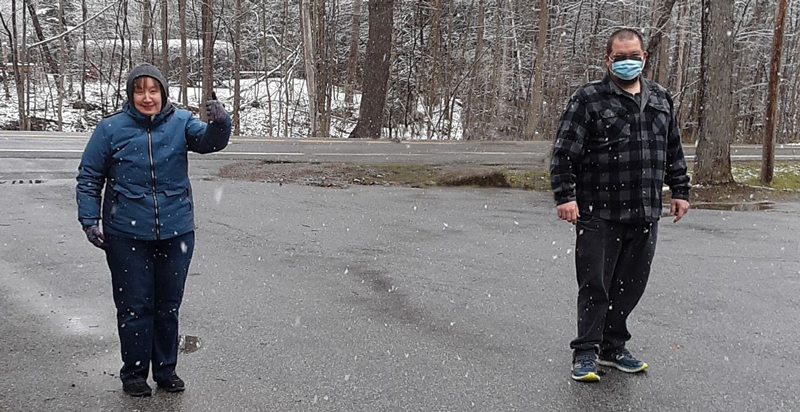 Sloan Russell social distancing with Tina.
Sloan Russell social distancing with Tina.
Russell works in a behavior house, meaning different situations and trigger points can impact one resident differently than others. He works a steady schedule with three women and three men in his house, helping with anything they need. Russell even helps with individual’s meal plans. Some individuals are tube fed, which staff are trained and certified for, while others have special diets including a ground diet and low acid diets.
Despite his daily duties, Russell’s day begins before he steps foot into the house, going through a screening before he enters the home. The screening process includes a check of temperature and heart rate, oxygen status and a standard questionnaire. The goal is to monitor as many things as possible, from vital signs to personal experiences on how they’re feeling for the day.
One of the hardest tasks Russell and other direct support professionals have taken on is explaining the virus. Although he goes through daily screening, not every resident understands what COVID-19 is all about.
“It takes a lot of explaining and a lot of just careful planning with all the staff on how we handle it. You have to ease everyone into it. Tell them everyone else is doing it and it’s not just them,” Russell said. “Everyone is their own person, so how we explain to them is case by case.”
Direct support professional Dawnmarie Costantino said consistency as well as repetitiveness helps individuals understand the virus. Using the same type of sentence throughout the entire staff can help reinforce proper behavior.
“It’s interesting because you have different forms of communication with the individuals in one home. Some of them do tactile manual signs, others are completely verbal, and others just do ASL. Then you have folks that are nonverbal who utilize gestures or physical movements for you to understand how they are feeling,” Costantino said. “It’s already a challenge so when we’re in a situation like this, reassuring them, letting them know why we are here and keeping everything consistent and concise will help them stay in a better face and be willing to participate in activities that are being offered at home.”
Russell reflected the same thoughts, adding some individuals are verbal, open to current events and consistently on social media while others are the opposite. He said those individuals that don’t understand what’s going on think they are being kept at home on purpose.
“It’s tough. You feel for them because you can’t explain everything to them.
They look at you and ask why you’re wearing a mask around them, or constantly washing our hands. They want to know what’s going on with that and why extra activities taking place,” Russell said.
Keeping Consistency
The extra activity Russell is referring to doesn’t only include proper PPE and screening procedures, but the “day-hab” classes as well. Prior to social restrictions, individuals in Saratoga Bridges would participate in a day program, or day-hab. Pamela Polacsek, assistant director of communications, said the day program has since moved to the individual’s houses or apartments.
“Because of the virus, all of our day staff are going and working in the houses during the day. The individuals who would normally be in a day program setting or at work are now at home,” Polacsek said.
The day-hab would normally partake in Wilton, Clifton Park, and off of Exit 13. At those locations, Polascek said an upwards of 450 individuals would get transported to partake in the day-hab.
Costantino would teach day-hab classes to 13 individuals from different agencies. Now, Costantino teaches a group of five in their own home. Just as Russell goes through the initial screening each morning, Costantino does the same. She now see’s her classroom individuals earlier in the day, allowing her to get a better idea on how everyone is feeling that morning.
She starts each day with an activity schedule, so the five individuals always know what to expect. They start with daily communication, talking about the day of the week and month.
“We talk about the things are good for them cognitively to remember. It’s very good for people to continue remembering where they are in their day or their months. Everyday we do the same thing to help them with structure and we see end results, helping them with their own cognitive abilities,” Costantino said.
After the daily communication, Costantino will focus on different activates each day. Activities including a math group, music exercise activities and preparing meals are some of the few. In her math class, Costantino teaches the typical school layout but adjusts the level for each individual.
“Not everyone gets the same thing out of it, but everyone gets something. I try to engage them in a lot of music. It’s really good for you to feel music and move to music. It lets people forget about what’s bothering them and their worries because they’re engaged in something with such a great energy,” Costantino said.
Having a set routine helps some individuals out who prefer having a schedule ahead of time. Costantino said when the individuals have a routine, they know what they’re looking forward to and can help with forgetfulness. She said some individuals may start forgetting earlier than others, but being able to remind them of the daily schedule helps their mental health. Bringing day-hab to their homes is something new to the residents as well, and having a schedule helps them differentiate between class and regular home hours.
Russell said his individuals have responded well since COVID-19 struck. Although they are coping, Russell noticed they missed going outside the most. He said outings with his house have always been a big deal, going to play basketball or to a department store. They are trying to incorporate sensory rides, using a van to keep individuals six-feet apart.
“We go out and do a ride through the neighborhood or go out by lake. We drive around so they can see scenery and look at nature. The biggest thing is trying to keep everyone isolated from outside contact as much as possible right now. It’s a reversal of typically what we do,” Russell said.
#WeAreEssential
Polacsek felt direct support professionals often get overlooked when someone defines an essential worker. In response to that, she created the hash-tag WeAreEssential to call attention to direct support professionals.
“Our field, a lot of times, gets overlooked as far as the essential work they do to enhance, improve and empower other peoples lives. It’s truly very inspiring…their commitment and devotion and flexibility throughout this whole virus,” Polacsek said.
Saratoga Bridges supports 132 people in their residential program, having 19 houses and 10 supportive apartments through the county. Of those individuals, Polacsek said 150 work in the community.
“A lot of our individuals have worked in grocery stores for years, and they’re working hard because the current hours to go into work. They’re providing support to the community as well. They’re certainly able to support the community that’s supporting them,” Polacsek said.
Russell feels that direct support professionals often get forgotten because people don’t understand the way these individuals live and their daily routines. He said the hash-tag wasn’t created for the work they’re doing during COVID-19, but rather the daily routines before and after COVID-19 they will continue to do.
“People don’t think there is actually staff out there helping and aiding. That there are individuals in these homes, where if we don’t come in or are not able to help these guys, they wouldn’t be able to live in these independent homes and enjoy life as it is. Some have no clue, they just think that these guys are autonomous. That they’re just out there living their best life not knowing how they live it,” Russell said.
Just as he goes through a screening to protect the individuals in his home, he does the same when he goes home to his family. Russell can work a 12 or 16-hour shift and feels at the end of the day, all essential workers are in the same situations.
“I’m trying to get other people to recognize what exactly a front line worker is, there are so many different aspects of being a front line worker. At the end of the day, all of us essential workers are all in the same boat. We all have to still work, so the chances of cross contamination between your job and your personal life is at an all-time high,” Russell said.
While Russell hopes to shed some light on his daily job for the community, Costantino said she noticed the work residential staff do. Since stepping outside her classroom, she noticed how careful the staff works with the individuals, ensuring every room in the house is sanitary. She noticed individual’s bedrooms were personalized as well.
“I have to say I’m really amazed about how much more work my residential coworkers do that I wasn’t aware of before. There are a lot more involved that I didn’t know,” Costantino said.





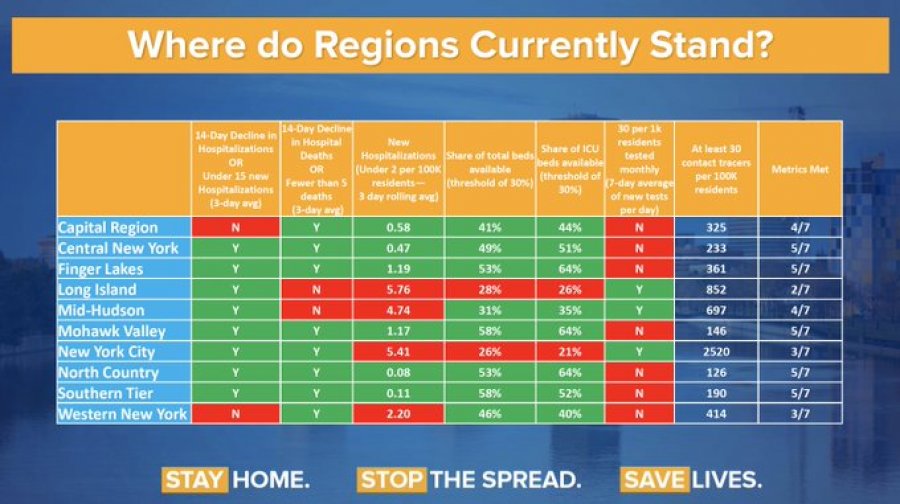
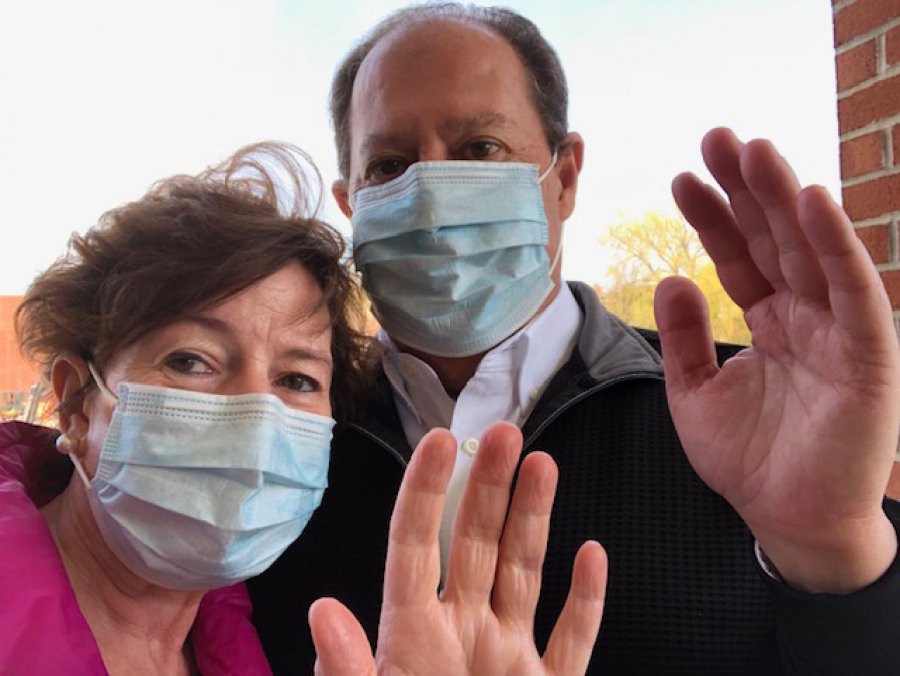
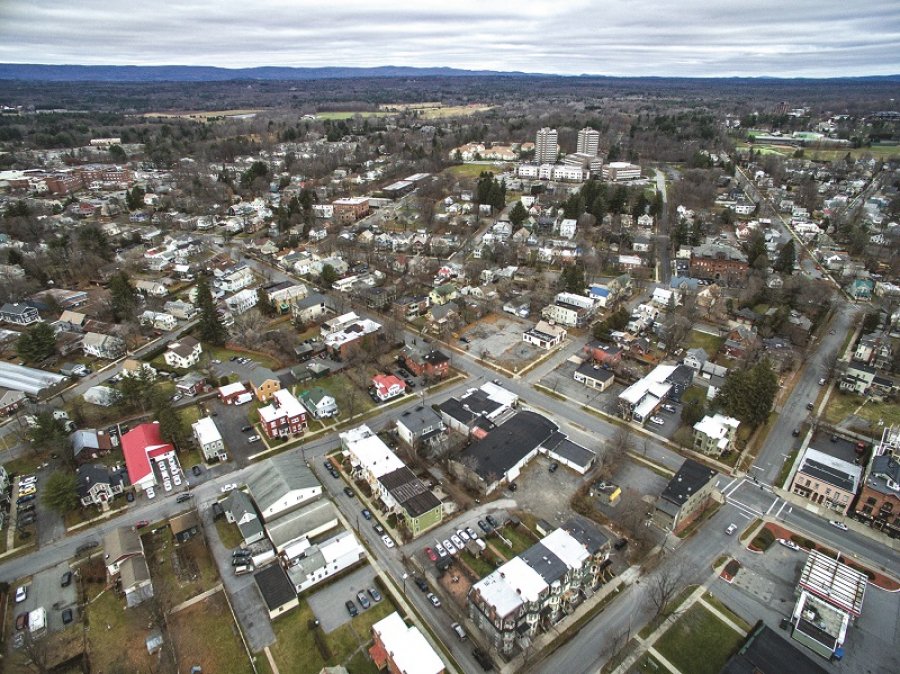



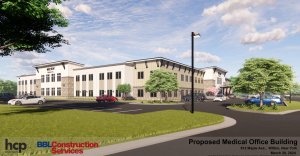

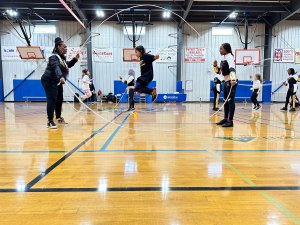



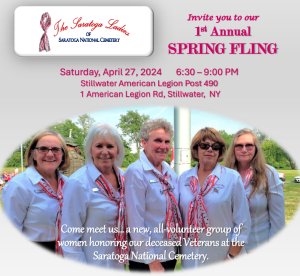













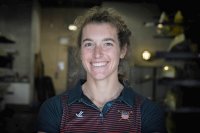
 How to resolve AdBlock issue?
How to resolve AdBlock issue? 









